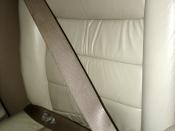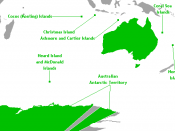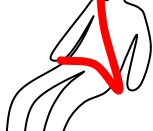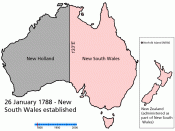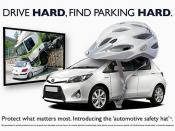Dear readerHi my name is [Name], and I'm an doing a doing a report of speeding and found that you have speed and I have looked at the ricks of speeding and the effect of hit having on your self, passengers and other vehicles. I have wrote and looked up some facts about safety and roads and I am shocked to find that some of the car companies are putting road users at risk. For example, a leading manufacturer in the United States has voluntarily recalled millions of its tires because of possible safety risks, and a major car-maker in Japan has admitted misleading the government - and the ordinary citizen - for decades over customer complaints about defects that could have cost lives. Even though there are people out there trying to make money this should also be said our roads are safer now because of a number of factors including an improved road system, which makes it easier to drive safely, and random breath-testing, which helps keep drunk drivers off the road.
A third factor - despite recent bungles - is an increase in car safety.
Safer carsCars have become safer partly because they are now stronger where it counts. To protect occupants from a direct impact, the passenger compartment should keep its shape in a crash. The Australian Design Rules, which set out design standards for vehicle safety (and emissions), specify such things as strength and stiffness requirements for side-doors to help protect occupants in a side impact; collapsible steering columns to minimise the risk of crushing or piercing injuries from a frontal impact; anti-burst door locks; and padding on instrument panels.
Strategic weaknessesBut 'weakness' can also be strength. The fronts of many cars are now manufactured with 'crumple zones' designed to absorb as much of the crash energy as possible in frontal and rear impacts. In effect, crumple zones act like the cardboard boxes used in movie stunts to break a fall. As the stuntman falls he gains kinetic energy; if he was to hit solid ground, most of that energy would be absorbed by his body in a very short time, with possibly fatal consequences. However, a well-designed stunt will ensure that the stuntman lands on a stack of cardboard boxes; the impact energy will then be used to collapse the boxes instead of to damage the stuntman. Similarly, the purpose of car crumple zones is to minimize the amount of crash energy transferred to passengers when a vehicle collides with a solid object.
The heroic seatbeltThere are other reasons for the increase in car safety. It is no coincidence that the decline in Australian road deaths commenced in earnest in the years following the introduction by 1973 of laws in all Australian states and territories making it compulsory to wear seatbelts. In fact, car accident researchers in Australia estimate that seatbelts reduce the risk of fatal injury to front-seat occupants by 45 per cent and the risk of serious injury by 50 per cent. The United States National Highway Safety Administration reports that 3 out of every 5 people killed in vehicle accidents in the US - where seatbelt use is much lower than in Australia - would have survived their injuries had they been strapped in.
Why seatbelts are effectiveStopping suddenly imposes a great deal of force on all objects in the vehicle. What the seatbelt does is distribute that force to the some of the strongest parts of the human anatomy - the chest and pelvis. Crash survivors will often have seatbelt-induced 'burns' and bruises in these areas - although this is far preferable to concentrating such forces on the head or at a puncture point in the chest or abdomen. Without a seatbelt, the occupant will continue to move forward in a frontal impact until brought to a stop by an object such as a windscreen, steering wheel, dashboard or front seat. In the most serious accidents, the seatbelt may cause internal injuries, while unrestrained occupants will probably be killed instantly.
Seatbelts play other safety roles. Unbuckled occupants become missiles that cause injury to other occupants should they collide with them. Being thrown from the car is usually equally calamitous; in a rollover, an unrestrained occupant who is thrown out of the car is likely to be crushed. In a frontal impact, occupants propelled from the car will be injured both by passage through the windscreen and on impact with the ground or other solid object.
AirbagsAirbags are a more recent addition to the armory against road trauma. Most commonly, these are located in the centre of the steering wheel and above the glove box on the passenger side. They are designed to activate almost instantaneously on impact to form a cushion as the head and chest of the driver or passenger flex forward. According to the Australian Government Department of Transport and Regional Services, this is what happens when an airbag deploys in a crash:â¢In the 15 to 20 milliseconds after impact, the crash sensors and control unit determine the severity of the collision and decide whether to deploy the airbag.
â¢At about 25 milliseconds, the airbag splits its covering pad in predetermined places and begins to inflate rapidly.
â¢At about 45 milliseconds, the bag is fully inflated while the seat belted occupant is still moving forward.
â¢At around 60 milliseconds, the occupant contacts the airbag, which immediately begins to deflate via vent holes in the back.
â¢Up to 100 milliseconds, the occupant continues to sink deeply into the airbag, which cushions the head and chest while it is deflating.
The airbag therefore functions in much the same way as the stuntman's cardboard boxes. It also acts as a 'friendly' barrier between the occupant and the hard, less forgiving surfaces of the car interior.
Like the seatbelt, airbags are widely credited with saving lives - US statistics suggest that the risk of fatality in a frontal impact is reduced by about 30 per cent by the deployment of an airbag. Crash tests in Australia indicate that the risk of serious head injury is reduced by 50 per cent or more in most popular makes of family-sized car.
Airbag hazard and how to use itAn airbag is designed to be fully inflated by the time the occupant's head makes contact with it. Anything else would be dangerous: a collision between a head, moving at high velocity in one direction, and the bag, moving at a similar speed in the other, could be fatal. And accidents do happen - airbags have been implicated in some deaths in the United States. Since car occupants there are less inclined to wear seatbelts, the airbags are designed to inflate more quickly - and thus with more force - than those used in Australia. Australian researchers have found no evidence of death or injury caused by airbag deployment in over 100 investigated cases.
Airbags can be dangerous to children and small adults - even when they are restrained by adult seatbelts - if they sit too close to the airbag or are not seated correctly when the airbag inflates. Moreover, rearward facing 'cradle' or capsule-type infant restraints should never be placed in a front passenger seat that is fitted with an airbag. In the event of a crash, the baby's head would be within the 'strike' zone of the airbag and the impact could lead to fatal head injuries. All occupants of cars with fitted airbags need to be aware of the potential danger and ensure they are seated correctly. In Australia, children and infants are more often buckled into the rear seat, which is much safer.
Expect more safety gainsThe strategic strengths and weaknesses that manufacturers are now building into their cars, along with safety devices such as the seatbelt, airbag and ABS, are the result of scientific and technological innovation, as well as considerable investment by car-makers. They are making cars safer and we can look forward to more improvements in the future. But safety devices do not offer a foolproof guarantee: drivers should be responsible for monitoring the safety of their cars and their behavior behind the wheel.
Thank you for my main information www.raa.com.au and the year 10 standers text book

